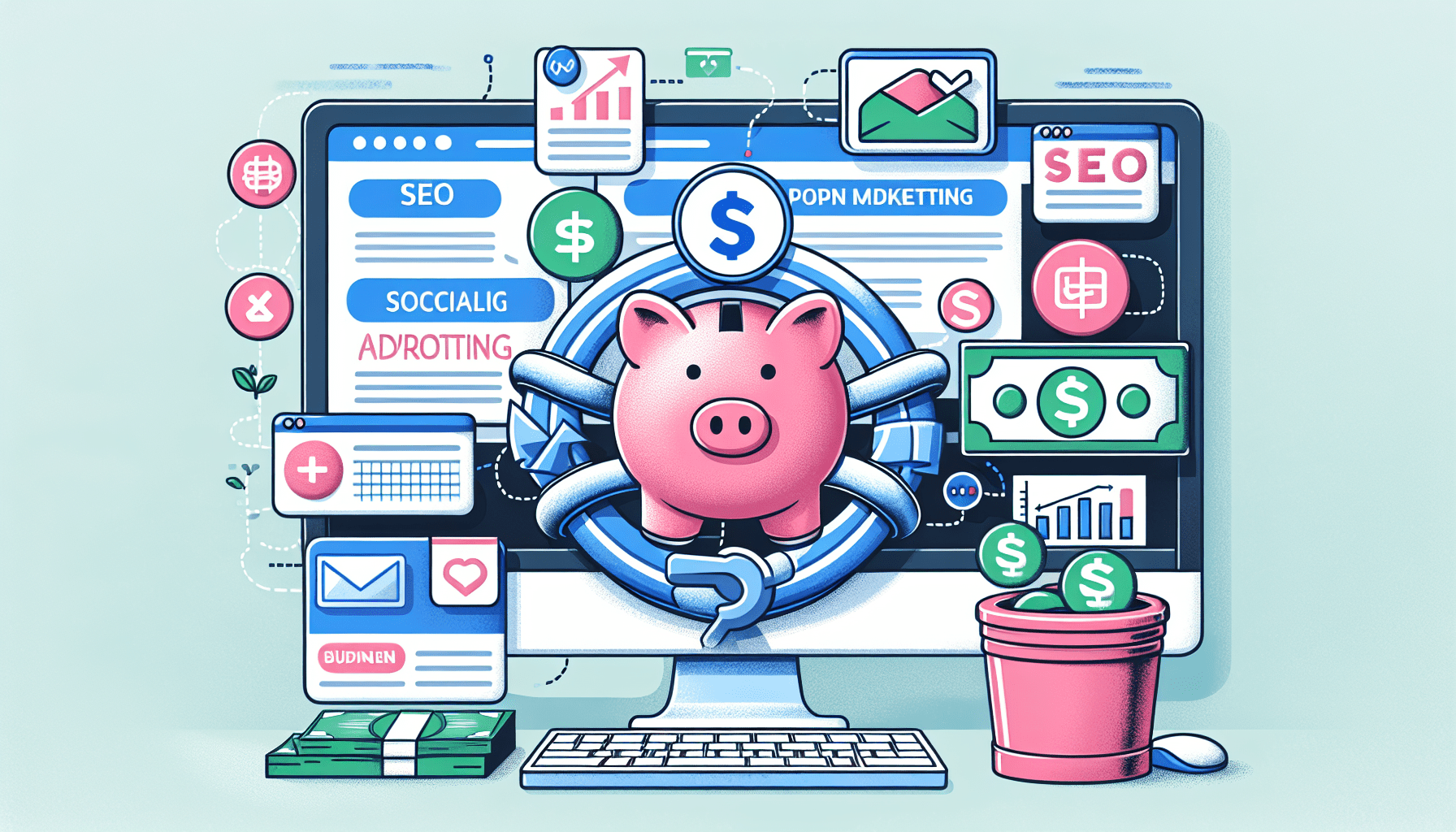Are you a small business owner looking to make a big impact in the digital world without breaking the bank? Look no further! In this article, we will explore the secrets to creating a successful digital marketing plan on a budget. From leveraging social media platforms to optimizing your website for search engine visibility, we’ve got you covered. So get ready to maximize your online presence and attract more customers, all while keeping your budget intact. Let’s dive in!

Set Clear Goals
Setting clear goals is the first step in creating an effective digital marketing plan on a budget. By defining your objectives, you can establish what you want to achieve through your digital marketing efforts. Are you looking to increase brand awareness, generate leads, drive website traffic, or increase sales? Once you have a clear understanding of your goals, you can then outline specific key performance indicators (KPIs) to measure your success. These KPIs could include metrics such as website traffic, conversion rates, email open rates, or social media engagement.
Know Your Target Audience
Understanding your target audience is crucial in digital marketing. To effectively reach and engage with your audience, you need to conduct market research to gain insights into their demographics, interests, and behaviors. This research will help you identify buyer personas, which are fictional representations of your ideal customers. By creating buyer personas, you can tailor your marketing messages and content to resonate with your target audience. Additionally, segmenting your target audience based on characteristics such as age, location, or buying preferences allows you to personalize your marketing efforts and deliver targeted messages.
Choose the Right Digital Channels
There are numerous digital channels available for marketing, including social media, search engines, email, and websites. Evaluating different digital channels is important to determine which ones align with your target audience and business goals. Consider factors such as the platforms your audience prefers, the reach and engagement potential of each channel, and the cost-effectiveness of using them. By choosing the right digital channels, you can maximize your marketing efforts and effectively reach your target audience without breaking the bank.
Optimize Your Website
Your website is the foundation of your online presence, so it’s essential to optimize it for better performance and user experience. One aspect of optimization is ensuring responsive design, which means your website adapts seamlessly to different devices such as desktops, tablets, and mobile phones. This is important because an increasing number of users browse the internet on their mobile devices. Another aspect is improving website loading speed since slow-loading websites can result in high bounce rates and lower search engine rankings. Implementing SEO best practices, such as optimizing meta tags, using relevant keywords, and creating high-quality content, can also boost your website’s visibility in search engine results.

Create Compelling Content
Content is king in digital marketing, and creating compelling and relevant content is key to attracting and engaging your target audience. Develop a content strategy that aligns with your goals and target audience. Determine the type of content that resonates with your audience, such as blog posts, videos, infographics, or podcasts. Ensure your content is high-quality, informative, and unique, providing value to your audience. Additionally, promoting user-generated content can be beneficial, as it not only engages your audience but also cultivates a sense of community and authenticity around your brand.
Leverage Social Media
Social media platforms offer a cost-effective way to reach and engage with your target audience. Choose the right social media platforms based on where your target audience spends their time online. Each platform has its own strengths and demographics, so it’s important to align your social media strategy accordingly. Engaging with your audience by responding to comments and messages, and participating in discussions helps build relationships and trust. To amplify your reach and engagement, consider utilizing social media advertising options, such as promoted posts or targeted ads, which allow you to reach a wider audience and drive more traffic to your website.
Implement Email Marketing
Email marketing remains one of the most effective and budget-friendly marketing strategies. Building an email list of subscribers who have opted in to receive communications from you is key. Offer valuable content, exclusive promotions, or incentives to encourage visitors to sign up for your email list. Once you have a list, create personalized and relevant emails that speak directly to your subscribers’ needs and interests. Monitor and analyze email campaign performance by tracking metrics such as open rates, click-through rates, and conversions. This data will provide insights into your email marketing effectiveness and allow you to optimize your strategies for better results.
Utilize Search Engine Marketing (SEM)
Search engine marketing (SEM) involves promoting your website or products through paid advertising on search engines like Google. This can be a cost-effective way to drive targeted traffic to your website. To maximize the effectiveness of your SEM efforts, use targeted keywords and ad copy that align with your audience’s search intent. Optimize your landing pages to provide a seamless user experience and encourage conversions. Monitor and adjust your campaigns regularly to ensure you’re getting the maximum return on investment (ROI) from your SEM efforts.
Collaborate with Influencers
Influencer marketing has gained significant popularity in recent years, and collaborating with relevant influencers can be a powerful way to extend your reach and build credibility. Identify influencers in your industry whose values and audience align with your brand. Form partnerships or sponsorships that involve influencers creating content or endorsing your products or services. This can introduce your brand to their loyal followers and generate quality leads. To measure the impact of influencer collaborations, track metrics such as website traffic, social media engagement, and conversions that can be directly attributed to the partnership.
Monitor and Analyze Results
Monitoring and analyzing the results of your digital marketing efforts is essential to understand what is working and what needs adjustments. Use analytics tools to track key metrics such as website traffic, conversion rates, social media engagement, and email campaign performance. Analyze the data to identify trends, patterns, and areas where you can make data-driven decisions to optimize your strategies. By continuously monitoring and analyzing results, you can refine your digital marketing plan and ensure that your efforts are delivering the desired results within your budget constraints.
Creating a digital marketing plan on a budget is achievable with careful planning, optimization, and targeting. By setting clear goals, understanding your target audience, and selecting the right digital channels, you can maximize your marketing efforts while keeping costs in check. By optimizing your website, creating compelling content, and leveraging social media, email marketing, search engine marketing, and influencer collaborations, you can effectively reach and engage your audience. Finally, continuously monitoring and analyzing your results allows you to refine your strategies for maximum ROI. With these steps, you can create a comprehensive digital marketing plan that achieves your goals without breaking the bank.

